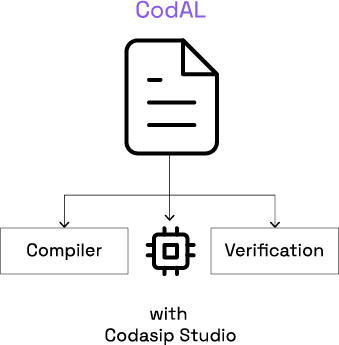Processor customization is one approach to optimizing a processor IP core to handle a specific workload. The idea is to take an existing core that could partially meet your requirements and use it as a starting point for your optimized processor. Now, why and how to customize a processor?
Why you should consider creating a custom core?
Before we start, let’s make sure we are all on the same page. Processor configuration and processor customization are two different things. Configuring a processor means setting the options made available by your IP vendor (cache size, MMU support, etc.). Customizing a processor means adding or changing something that requires more invasive changes such as changing the ISA, writing new instructions. In this blog post we focus on processor customization.
Customizing an existing processor is particularly relevant when you create a product that must be performant, area efficient, and energy efficient at the same time. Whether you are designing a processor for an autonomous vehicle that requires both vector instructions and low-power features, or a processor for computational storage with real-time requirements and power and area constraints, you need an optimized and specialized core.
Processor customization allows you to bring in a single processor IP all the architecture extensions you need, standard or custom, that would have been available in either multiple IPs on the SoC or in one big, energy intensive IP. Optimizing an existing processor for your unique needs has significant advantages:
- It allows you to save area and optimize power and performance as it targets exactly what you need.
- It is ready to use. The processor design has already been verified – you only have to verify your custom extensions.
- You design for differentiation. Owning the changes, you create a unique product.
Now, one may think that this is not so easy. How reliable is the verification of a custom processor? Differentiation is becoming more difficult, time consuming, and sometimes more expensive. The success of processor customization relies on two things:
- An open-source ISA such as RISC-V.
- Design and verification automation.
Custom processor, ASIP, Domain-Specific Accelerator, Hardware Accelerator, Application-Specific processor… are all terms related to processor customization.
Customizing a RISC-V processor
Remember: the RISC-V Instruction Set Architecture (ISA) was created with customization in mind. If you want to create a custom processor, starting from an existing RISC-V processor is ideal.
You can add optional standard extensions and non-standard custom extensions on top of the base instruction set to tailor your processor for a given application.

For a robust customization process that ensures quality in the design and confidence in the verification, automation is key.
With Codasip you can license RISC-V processors:
- In the usual way (RTL, testbench, SDK).
- In the CodAL source code.
CodAL is used to design Codasip RISC-V processors and generate the SDK and HDK. You can then edit the CodAL source code to create your own custom extensions and modify other architectural features as needed.
Microsemi opted for this approach as they wanted to replace a proprietary embedded core with a RISC-V one. Check this great processor customization use case with Codasip IP and technology!
Processor design automation with Codasip Studio
The legacy approach to adding new instructions to a core is based on manual editing. Adding custom instructions must be reflected in the following areas:
- Software toolchain.
- Instruction set simulator.
- Verification environment.
- RTL.

Design Automation without Codasip Studio. Source: Codasip.
With the software toolchain, intrinsics can be created so that the new instructions are used by the compiler, but this also means that the application code needs updating. However, modifying the existing ISS and RTL are both potential sources of errors. Lastly, if the verification environment needs changing, this is a further area for problems. Verifying these manual changes is a big challenge and adds risk to the design project.
Some vendors offer partially automated solutions, but by not covering all aspects of processor customization they still leave room for error due to the manual changes.

Design Automation with Codasip Studio. Source: Codasip.
In contrast, with Codasip the changes are only made to the CodAL source code. The LLVM toolchain is automatically generated with support for the new instructions. Similarly, the ISS and RTL are generated to include the custom instructions and can be checked using the updated UVM environment. This approach not only saves time, but is a more robust customization process.
Create an application-specific processor with RISC-V and Codasip
As differentiation is becoming more difficult, time consuming and sometimes more expensive with traditional processor design, customizing a processor so that it will meet your unique requirements is the key. Creating an application-specific processor efficiently, without compromising PPA, requires an open-source architecture and tools to automate the design and verification process. Find out more in our white paper on “Creating Domain-Specific Processors using custom RISC-V ISA instructions”.
